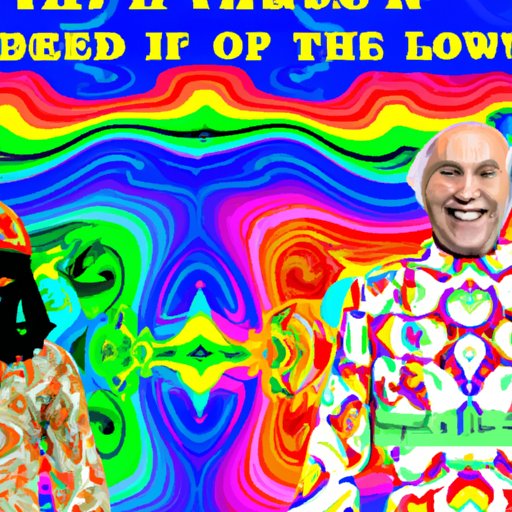Introduction
Lysergic acid diethylamide (LSD) is a powerful psychedelic drug that was first synthesized in 1938 by Swiss chemist Albert Hofmann. It has been used for both recreational and therapeutic purposes, and its effects can range from mild hallucinations to intense spiritual experiences. This article will explore the history of the invention of LSD, the momentous discovery of its effects, and the long-term effects of using the drug.
A Historical Look at the Invention of LSD
The scientist who invented LSD was Albert Hofmann, a Swiss chemist working for Sandoz Laboratories in Basel, Switzerland. He was researching the medicinal properties of certain compounds derived from ergot fungus when he stumbled upon the chemical structure of lysergic acid diethylamide. His research initially focused on finding a stimulant to help with childbirth, but he soon discovered the hallucinogenic effects of LSD.
Hofmann’s discovery changed the course of the psychedelic movement. Prior to this, the use of psychedelics was mainly confined to religious rituals or shamanic practices. However, with the advent of LSD, the potential of psychedelics to induce profound spiritual experiences was revealed to the world. The use of LSD became popular among the counterculture movement of the 1960s, and it was soon adopted by the hippie subculture as a means of achieving spiritual enlightenment.

Exploring the Momentous Discovery of LSD
Hofmann’s discovery of LSD was accidental. While conducting research into the medicinal properties of certain compounds derived from ergot fungus, he accidentally ingested a small amount of the compound he had synthesized. Immediately after ingesting the compound, Hofmann experienced strange sensations and vivid hallucinations. He later identified the compound as lysergic acid diethylamide, or LSD.
The discovery of LSD had a momentous impact on the psychedelic movement. For the first time, scientists were able to study the effects of psychedelics on human consciousness. Researchers began exploring the potential therapeutic applications of LSD, such as treating alcoholism, depression, and other mental health disorders. Despite the potential medical benefits of LSD, its use was largely discouraged due to its unpredictable effects and potential for abuse.
The Long-Term Effects of LSD on the Brain
LSD affects the brain by altering the levels of serotonin, a neurotransmitter involved in regulating mood, behavior, and perception. When taken in large doses, LSD can cause users to experience intense hallucinations and altered states of consciousness. However, there is still much debate about the long-term effects of using LSD. Studies have shown that LSD can cause temporary changes in brain activity, but there is no evidence that these changes are permanent.
Some researchers have suggested that LSD may have positive long-term effects on the brain, including improved creativity and enhanced problem-solving abilities. However, further research is needed to investigate these claims. Recent studies suggest that LSD may be beneficial in treating anxiety and depression, but more research is needed to confirm these findings.

The History and Legacy of LSD in Pop Culture
LSD has had a major influence on popular culture. Its use has been featured prominently in films, books, and music. The drug has been portrayed as a tool for self-exploration and spiritual enlightenment, and its use has been associated with the counterculture revolution of the 1960s and 70s. The drug has also become a symbol of rebellion and nonconformity.
Despite its popularity in pop culture, LSD remains a Schedule I controlled substance in the United States and many other countries. Its use is still largely discouraged due to its unpredictable effects and potential for abuse. Nonetheless, LSD continues to be an important symbol of the counterculture revolution and a source of fascination for many.
Conclusion
In conclusion, LSD was first synthesized in 1938 by Swiss chemist Albert Hofmann. His accidental discovery of the hallucinogenic effects of the drug changed the course of the psychedelic movement and sparked a counterculture revolution. Although its use is still largely discouraged due to its unpredictable effects and potential for abuse, LSD remains an important symbol of the counterculture revolution and a source of fascination for many.
(Note: Is this article not meeting your expectations? Do you have knowledge or insights to share? Unlock new opportunities and expand your reach by joining our authors team. Click Registration to join us and share your expertise with our readers.)
